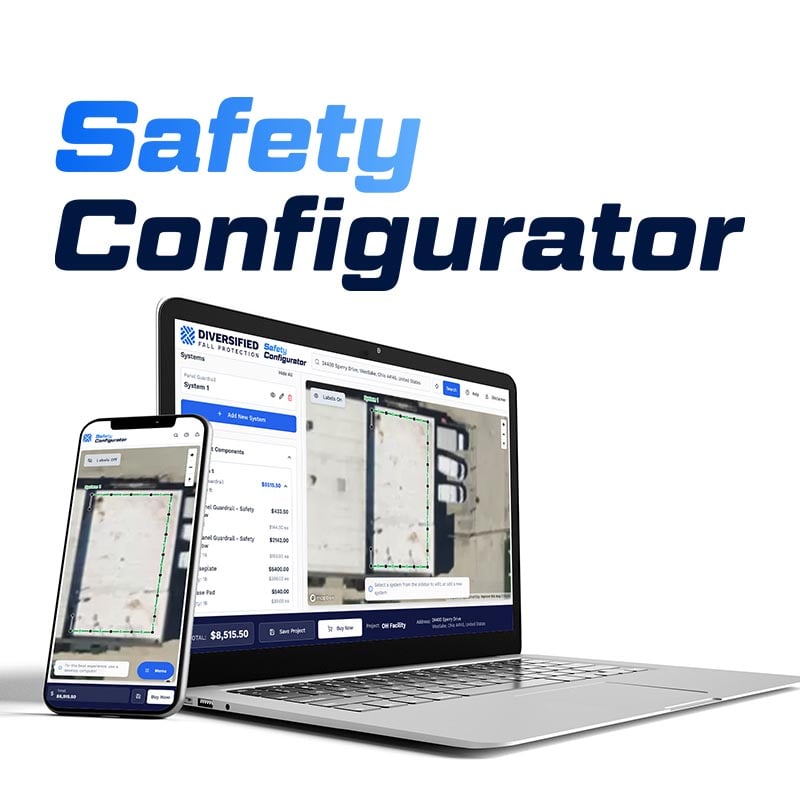What Is the Difference Between A Competent Person and A Qualified Person?
If you have ever waded through the sea of OSHA fall protection regulations, you may have noticed references to a “qualified person.” What does this term mean, and what are the differences between a competent and qualified person? And from a design perspective, is the use of a qualified person enough to enough to ensure the safety of a fall protection system?
OSHA 29 CFR 1926.32(m) defines a qualified person as an individual “who, by possession of a recognized degree, certificate or professional standing, or who by extensive knowledge, training and experience, has successfully demonstrated his ability to solve or resolve problems relating to the subject matter, the work, or the project.”
If the definition above sounds vague, you aren’t alone. Let’s use OSHA’s language surrounding horizontal lifeline requirements to help explain the term “qualified person” in plain terms, and how this designation differs from a “competent person.” The construction regulations for horizontal lifelines (OSHA 29 CFR – 1926, Subpart R) tells us that “Horizontal lifelines shall be designed, installed, and used under the supervision of a qualified person, as part of a complete personal fall arrest system, which maintains a safety factor of at least two.”
The general industry requirements for horizontal lifelines (OSHA 29 CFR – 1910, App. C) read in a similar manner:
“Horizontal lifelines, where used, shall be designed and installed as part of a complete personal fall arrest system, which maintains a safety factor of at least two, under the supervision of a qualified person.”
A qualified person has the knowledge and expertise to calculate end loads, fall clearances, and determine the required quantity and location of intermediate and end-posts, and install or supervise the installation of the system. Although this list seems fairly comprehensive, it is important to note that not every qualified person can determine if the structure the lifeline attaches to is sufficient to withstand the moment loads during fall arrest. Remember, the OSHA language mandates a safety factor of two, and part of this equation includes determining that the lifeline won’t separate from its attachment points during a fall. Put another way, you’ll need a qualified person to design the system, but if this person is not a structural engineer or a PE, you’ll need review and analysis by an additional party to ensure worker safety and OSHA compliance.
A competent person is not qualified to design or install a lifeline. OSHA 29 CFR 1926.32(f) defines a competent person as an individual “who is capable of identifying existing and predictable hazards in the surroundings or working conditions which are unsanitary, hazardous or dangerous to employees, and who has authorization to take prompt corrective measures to eliminate them.”
So what does this mean in real-world practice? To earn this certification, individuals take competent training classes that help them identify unsafe conditions, but only an employer can authorize an employee to take “corrective measures.” In fact, employers are responsible for designating a competent person at each jobsite, and OSHA officials often ask to speak with the competent person during an inspection. Returning to our HLL example, the competent person can stop work if a worker isn’t tying off to the lifeline, or if three employees are tying off to a system designed for two. By now we hope you are beginning to see the difference—one party is responsible for design and installation (qualified person) while the other is charged with enforcing the lifeline’s safe use (competent person).
If you don’t understand these terms and their importance, you can jeopardize OSHA compliance, and more importantly, worker safety by:
- Failing to designate a competent person
- Charging a competent person with fall protection system design/installation
- Enlisting the services of a fall protection company that doesn’t have the on-staff engineering resources (structural engineers or P.E.’s) to perform structural analysis and/or document a safety factor of two
If you are searching for a partner to solve your fall protection challenges, it is important to ask about the qualifications of the individuals charged with designing and installing the system. Having a qualified person to perform the work is essential, but not all “qualified” individuals possess the same skill sets. To learn more about fall protection, or to discuss an upcoming project, contact the safety specialists at Diversified Fall Protection for further assistance.
Schedule an assessment with Diversified Fall Protection
Contact Us to request a fall safety review

b-1.jpg?width=1368&height=1340&name=Rail%20(175)b-1.jpg)

